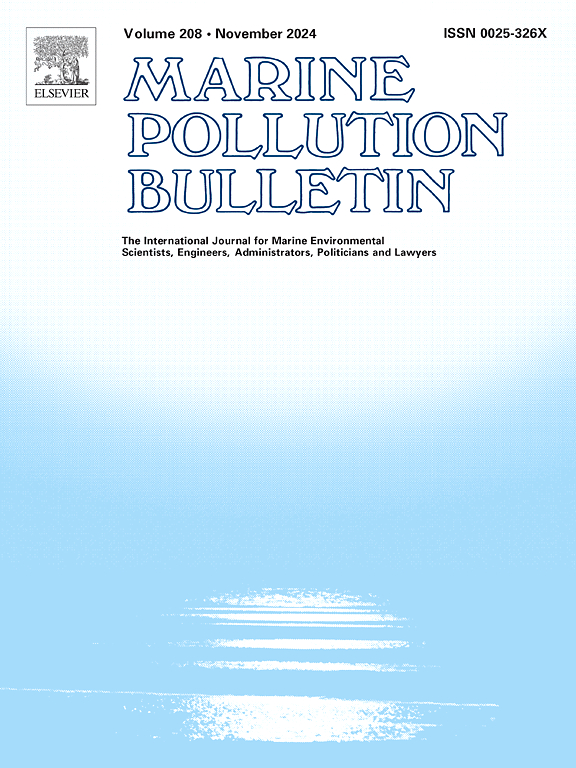自然灾害如何影响受保护岛屿生态系统中海洋垃圾的分布(海底生物圈保护区-哥伦比亚)。
IF 5.3
3区 环境科学与生态学
Q1 ENVIRONMENTAL SCIENCES
引用次数: 0
摘要
岛屿特别容易受到风暴和飓风的影响,这可能造成严重的环境、经济和社会影响,包括海洋生态系统中废物的积累。2020年11月,飓风“约塔”袭击了哥伦比亚海底生物圈保护区的普罗维登西亚岛和圣卡塔利娜岛。本研究评估了飓风后海洋垃圾的分布、组成和来源,重点关注在海滩、红树林和珊瑚礁等沿海生态系统中观察到的变化。对2019年和2021年数据的比较分析揭示了该岛多样化生态系统与海洋垃圾相互作用的显着差异,强调了极端事件对这些环境的影响。虽然红树林和后海滩植被是垃圾保留区,尤其是塑料垃圾保留区,但这些生态系统在2021年显示出垃圾密度显著减少,这可能是由于恢复期间的直接清除工作以及飓风驱动的海洋学过程可能重新分配了较轻的垃圾。相比之下,在飓风过后,沙滩上的垃圾增加了,这表明在极端天气事件中,沙滩更容易受到海浪和风带来的垃圾沉积的影响。这些发现强调了自然灾害后管理海洋垃圾的复杂性,并强调了在脆弱的岛屿生态系统中加强废物管理战略的必要性。本文章由计算机程序翻译,如有差异,请以英文原文为准。
How natural disasters affect the distribution of marine litter in protected island ecosystems (Seaflower Biosphere Reserve — Colombia)
Islands are particularly vulnerable to storms and hurricanes, which can cause severe environmental, economic, and social impacts, including the accumulation of waste in marine ecosystems. In November 2020, Hurricane Iota struck the islands of Providencia and Santa Catalina in the Seaflower Biosphere Reserve, Colombia. This study assesses the distribution, composition, and sources of marine litter after the hurricane, focusing on variations observed across coastal ecosystems such as beaches, mangroves, and coral reefs. A comparative analysis of data from 2019 and 2021 reveals significant differences in how the island's diverse ecosystems interact with marine litter, underscoring the impact of extreme events on these environments. While mangroves and back-beach vegetation act as retention zones, particularly for plastic waste, these ecosystems showed a marked reduction in litter density in 2021, likely due to direct removal efforts during recovery and hurricane-driven oceanographic processes that may have redistributed lighter litter. In contrast, sandy beaches experienced an increase in litter following the hurricane, highlighting their greater vulnerability to litter deposition transported by waves and wind during extreme weather events. These findings emphasize the complexity of managing marine litter after natural disasters and underscore the need for enhanced waste management strategies in vulnerable island ecosystems.
求助全文
通过发布文献求助,成功后即可免费获取论文全文。
去求助
来源期刊

Marine pollution bulletin
环境科学-海洋与淡水生物学
CiteScore
10.20
自引率
15.50%
发文量
1077
审稿时长
68 days
期刊介绍:
Marine Pollution Bulletin is concerned with the rational use of maritime and marine resources in estuaries, the seas and oceans, as well as with documenting marine pollution and introducing new forms of measurement and analysis. A wide range of topics are discussed as news, comment, reviews and research reports, not only on effluent disposal and pollution control, but also on the management, economic aspects and protection of the marine environment in general.
 求助内容:
求助内容: 应助结果提醒方式:
应助结果提醒方式:


